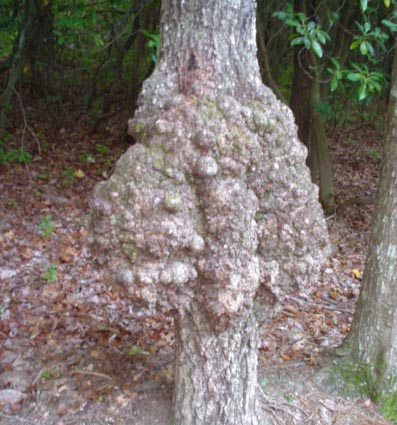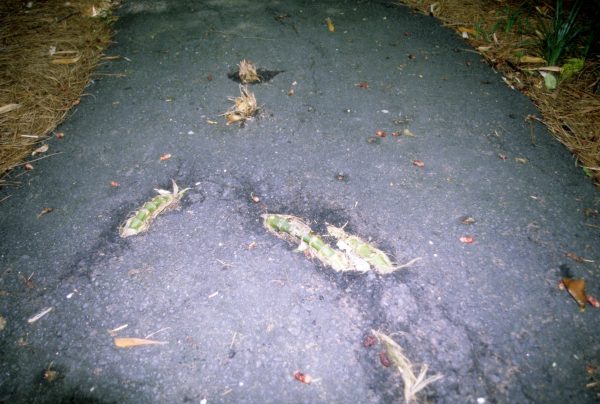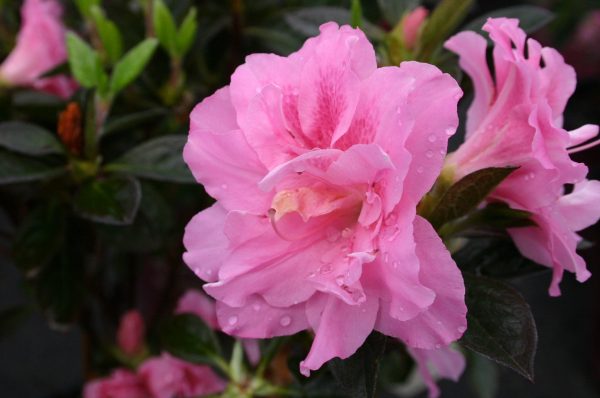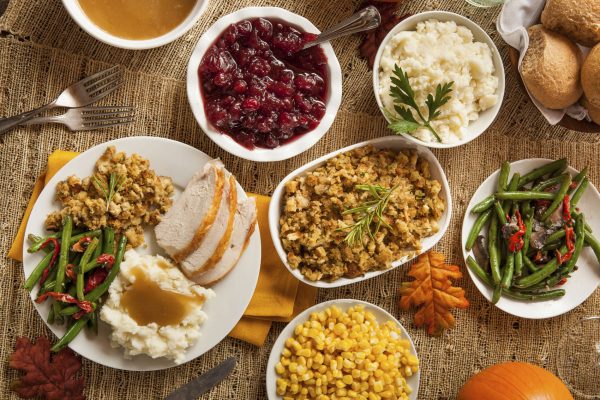Pepper

Capsicum annuum, Capsicum chinense, Capsicum frutescens
Peppers are available in so many types and varieties that most gardeners stick to a few types that they will use in their recipes. The most familiar peppers are the bells: green-red, yellow, purple-lilac, and orange. These are generally mild and can be used as green peppers or allowed to ripen.
• More detailed information can be found in The Georgia Fruit & Vegetable Book by Walter Reeves and Felder Rushing
• See also:
All green peppers eventually turn one of the other colors. Sweet peppers are usually C. annuum whereas hot peppers can be any of the 3 species noted. Hot peppers are usually called chilies, and the intensity of the heat and the flavor vary tremendously. The heat, measured in Scoville units, can be as tolerable as jalapenos at a respectable 3000 to 5000 Scoville units, to the frighteningly hot habaneros at a staggering 285,000 Scoville units. Peppers and chilies can be bell-shaped, round, pointed, or slender, but most chilies are long and slim.
WHEN TO PLANT
Peppers are warm-weather plants. There is no sense getting them in the garden before soils warm up because the plants will just sit there. Start seed indoors under lights about 2 weeks before the frost-free date (average date of last frost). Set the plants in the garden when all danger of frost has passed, usually about the first of April.
WHERE TO PLANT
Plant peppers in a well-drained part of the garden that receives full sun (8 to 10 hours will suffice).
HOW TO PLANT
Apply a complete garden fertilizer, such as 10-10-10, at a rate of 3/4 pound per 100 square feet of garden. Spade or rototill the soil. Use your homegrown pepper transplants, or buy transplants from greenhouses or garden centers. Transplants should have 3 to 4 sets of leaves that are a healthy green color. Purple- or yellow-tinged plants will have difficulty getting started; the color indicates that they are weak or hungry and will need time to begin growing after being damaged. Check plants carefully for signs of insects because aphids and whiteflies often gain entrance to the garden on infested transplants. In rows, space the plants 10 inches apart, with 18 to 24 inches between rows. In beds, space the plants 15 inches apart in each direction, setting 2 or 3 plants across a bed. Remove the plants from the containers, and set the plants at the same depth they were growing in the containers. Firm the soil gently around each plant, and water in with 1 cup of transplant starter fertilizer mixed according to directions on the package. Homegrown transplants may become weak and leggy. Do not plant them deeper to compensate, or the roots will suffocate. Plant them on their sides, and cover the long stems lightly with soil. The tips of the stems will quickly turn upward, and the buried stems will sprout new roots.
CARE AND MAINTENANCE
Peppers are easy to grow, but diseases and pests may become problems if you are not alert to them. Eliminate verticillium and fusarium wilts, and yellows, by planting disease-resistant varieties. Control foliar diseases, if serious, with an approved garden fungicide. . These plants are very susceptible to a virus disease, tobacco mosaic, carried from infected weeds by aphids. There are some reports that the disease maybe transferred to the plants by working with them after handling tobacco products. Some researchers think curing the tobacco destroys the virus. Be safe. Wash your hands. Use insecticidal soap to combat aphids and mites; combat caterpillars and beetles with an approved garden insecticide. Other troubles include blossom-end rot and lack of fruit set. Blossom-end rot appears as a leathery-brown spot on the bottom of a pepper. Poor growing conditions, such as cold or wet weather, or a lack of calcium in the soil cause blossom-end rot. Usually, only the first few peppers show this problem, and the rest of the fruits are fine. Catfacing (malformed fruit) is due to poor pollination. Peppers are sensitive to weather conditions while flowers are being pollinated. Too hot, too cold, or too calm and the flowers abort and fail to set fruit. Certain varieties are less susceptible to aborting, so try several until you find ones that do well in your garden’s conditions. To promote pollination, tap flower clusters in early morning to shake pollen from the flowers onto the pistil. I usually use a pencil to tap the flowers. Peppers need 1 inch of water per week; water them if nature does not cooperate. Side-dress the plants with a complete fertilizer when they have set fruit.
ADDITIONAL INFORMATION
Handle all hot peppers with care! This point cannot be overemphasized. Wear rubber gloves if there are any cuts on your hands. Do not touch your face or eyes after touching hot peppers or serious eye damage can result. Harvest sweet peppers at any size. Pick bell peppers while they are green, before they turn color. Pick the new brightly colored bell peppers as they mature. After ripening, the flavors improve. Harvest hot peppers when they are red-ripe unless the recipe calls for green chilies. Cutting the peppers with a sharp knife or shears is a better method than pulling them off, which may break the plants.
VARIETIES
There are more and more choices for good quality peppers turning various colors at maturity. The following are worth trying:
Varieties
Days to Maturity
Comments
Hot Peppers:
Big Chili
68 days
Classic Anaheim type, large.
Cherry Bomb
65 days
Not as hot as others.
Habanero
90 days
Blistering, watch out!
Hungarian Wax
70 days
Really hot.
Jalapeno
75 days
Familiar in Tex-Mex cuisine.
Large Red Thick Cayenne
75 days
These are really hot.
Long Red Slim Cayenne
75 days
Hot enough!
Red Chili
85 days
The familiar chili.
Tam Jalapeno
65 days
Not quite as hot as a regular jalapeno.
Sweet Peppers:
Bell Types:
Chocolate:
Chocolate Beauty
85 days
Late, slow to set.
Chocolate Belle
75 days
Earlier, maybe smaller.
Green/Orange:
Orange Sun
80 days
Late but good fall color.
Valencia
90 days
Very late, good color in salads.
Green/Red:
Bell Boy Hybrid
70 days
4-lobed, excellent for stuffing; TMV. AAS.
Better Belle Improved
65 days
Better than the original; TMV.
California Wonder
72 days
4-lobed, sweet and mild. Popular.
Yolo Wonder
75 days
Smaller than California Wonder, rarely sunburns, TMV
Giant Marconi
70 days
Excellent for grilling; not bitter; TMV, PVY. AAS.
King Arthur
72 days
Large fruit, very productive.
Lady Bell
72 days
Sets well in cooler areas.
Vidi
64 days
Sets well under stress; TMV.
Green/Yellow:
Canary
72 days
Fresh color, early.
Ori
74 days
Sets well under stress.
Orobelle
76 days
Blocky, colorful.
Ivory/Red:
Blushing Beauty
75 days
Ivory to blush-pink to red. AAS.
Purple:
Lilac
70 days
Lavender, turning red at maturity.
Purple Belle
70 days
Nearly black, turning red at maturity.
Frying Types
Biscayne
65 days
Pale green to red at maturity.
Gypsy
65 days
Pale yellow to orange to red. AAS.
Key Largo
66 days
Pale green, red at maturity.
Sweet Banana
70 days
Pale yellow, waxy.
Pimento Types:
Pimiento Elite
85 days
Red at maturity.
Super Red
70 days
Good, early.
ABBREVIATIONS:
TMV=TOBACCO MOSAIC DISEASE RESISTANCE.
PVY = POTATO VIRUS Y













